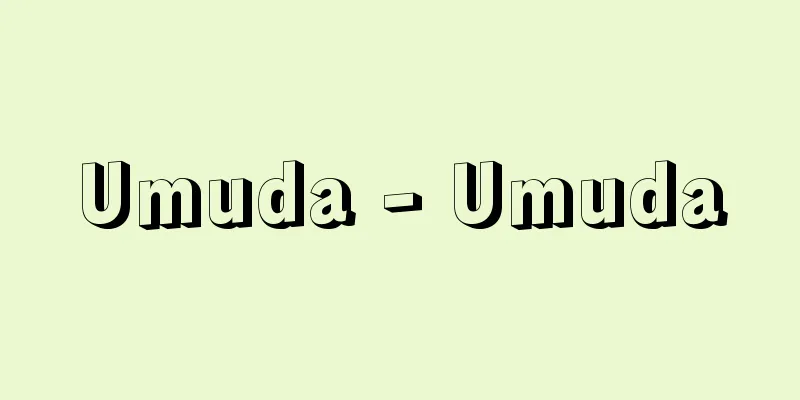Umuda - Umuda

|
...As a result, the phenomenon of land concentration among certain classes began to be observed even in land held by ordinary farmers, but the core of the landlord class that emerged in this way was the village leaders. Thus, from the second half of the 19th century onwards, the modern landlord class emerged through the above three processes, and can be broadly categorized as consisting of the zawat class and the village leaders centered around the village chief ('umda). Although these two classes sometimes shared interests, they also competed with each other in areas such as the distribution of water, the sale of harvests, and the securing of labor. From [Village] … *Some of the terminology explanations that mention "Umuda" are listed below. Source | Heibonsha World Encyclopedia 2nd Edition | Information |
|
…そのため,一般農民保有地においても特定階層への土地集積現象が見られるようになったが,こうして台頭した地主層の核心をなしたのは村落有力者層であった。 こうして,19世紀後半以降,以上三つの過程を通して近代的地主層が出現したが,それを大きく類別すれば,ザワート層と村長(ウムダ‘umda)を中心とする村落有力者層とからなっていた。この二つの階層は,利害関係を共有することもあったが,水の分配,収穫物の販売,労働力の確保などにおいて対抗し合っていた。… 【村】より… ※「ウムダ」について言及している用語解説の一部を掲載しています。 出典|株式会社平凡社世界大百科事典 第2版について | 情報 |
Recommend
Temporomandibular joint
This joint is formed by the condyle of the mandibl...
Underwater archaeology
…A branch of archaeology that deals with ruins th...
Fijian
...In the following, the same applies to Melanesi...
Ekikin
Please see the page for "Prince Gong's D...
Belgrade - Beograd (English spelling)
The capital of the Republic of Serbia. Its Englis...
Kiyose [city] - Kiyose
A city in the northern part of central Tokyo. It w...
Sumatra short‐eared rabbit
A mammal of the family Leporidae in the order Lago...
Ramp
…When expressways intersect or connect with each ...
Borodin
Russian composer and chemist. Also known as Borodi...
Centrifugal casting
A method in which molten metal is poured into a c...
Pierre Carlet de Chamblain de Marivaux
French playwright and novelist. Born in Paris. Sp...
Murayama Kaita
Western-style painter and poet. Born in Yokohama ...
Shabu-shabu
It is a type of hot pot dish. A deep pot is fille...
Nonstoichiometric compounds - nonstoichiometric compounds
This refers to a compound that does not follow the...
Karel-Dekin method
…Received the Nobel Prize in Physiology or Medici...









